"It's a very convenient place to have a baby," Lang points out, adding that the labor went so quickly that her midwives arrived only about a half an hour before the birth. "Empty the tub and it's all cleaned up."
Nico was born six years ago. In 2014, the most recent year for which we have statistics, over 59,000 Americans chose to have their babies outside the hospital. Of those, 38,094 births occurred at home, the highest number since 1989. Though still only a fraction of the nearly four million births that occur in America each year, out of hospital birth is on the rise.
When Americans think of women who choose home birth, we usually conjure up images of barefoot hippies with flowing skirts and unbrushed hair, not of Jennifer Lang, M.D., a board-certified obstetrician-gynecologist and a graduate of the Albert Einstein College of Medicine, whose typical attire is LA-chic: designer jeans, low-heel ankle booties, a strappy tank, and structured jacket. Lang spent four years attending births at St. Luke's-Roosevelt Hospital Center, which is affiliated with Columbia University, did three years of additional surgical training at UCLA as a gynecological cancer fellow, and then worked in private practice in Beverly Hills. Lang estimates she has attended over a thousand hospital births.
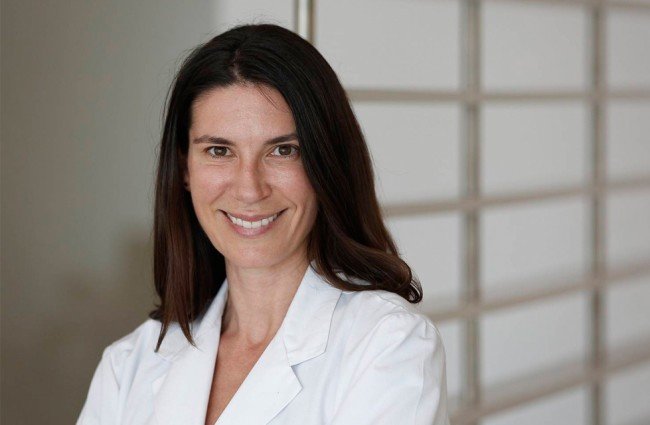
Why?
Lang says that home is where she felt safest, most comfortable, and most relaxed.
"I had an expert midwife who kept meticulous records of her outcomes," Lang explains. "I've never seen an obstetrician at the first prenatal visit hand over their complete list of how many thousands of births they had done, what their overall C-section rate was, how many complications they had, what the complications were. My midwife did that for me and I felt incredibly safe in her hands. Her statistics were far better than any of the OBs I'd ever met, or even my own."
Heidi Rinehart, M.D., is another obstetrician who chose out-of-hospital birth. Based in Keene, New Hampshire, Rinehart estimates she has attended over 2,000 births. Twenty-three years ago, Rinehart and her husband — who's also an obstetrician — decided to birth their first child at The Farm, an intentional community located 95 miles southwest of Nashville, Tennessee. Rinehart explains they were living in Tennessee at the time, she wanted to have an unmedicated childbirth, and she was impressed by the statistics The Farm midwives had previously published.
"I evaluated the safety of that choice based on real data," Rinehart says. "And I could see from my work in the hospital that it was very hard to have a physiologic birth without interventions that interfere with the unfolding of the process. I wanted to have a natural birth, and I knew the constraints of the hospital, both physical and physiological, would have made it harder."
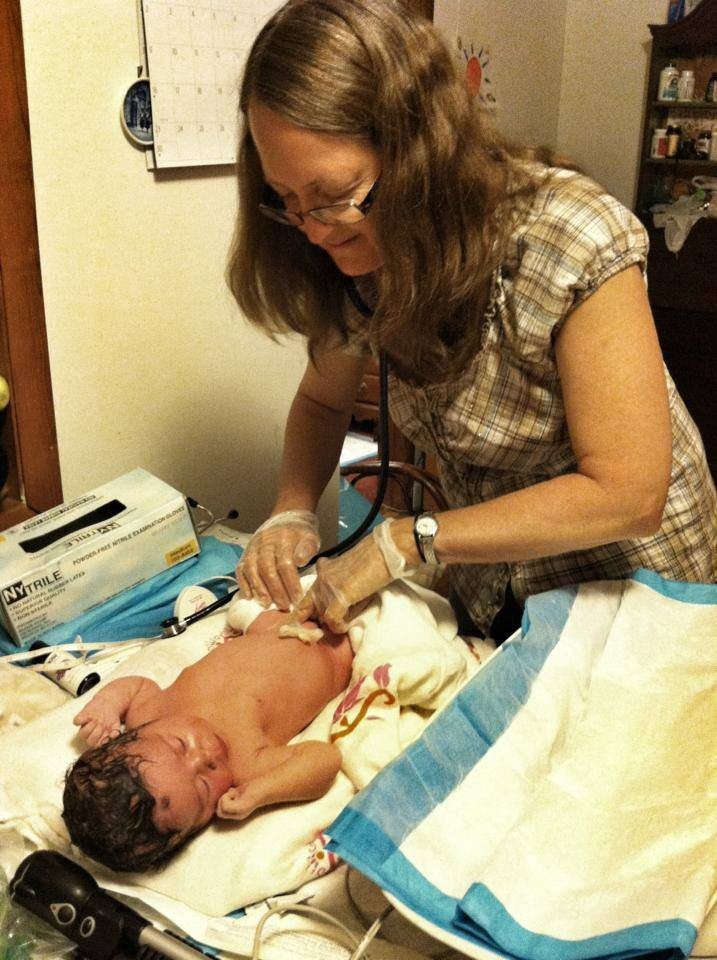
"We have a 1.7 percent C-section rate," says midwife Deborah Flowers, 61, who has been delivering babies on The Farm for thirty years and was one of the midwives who cared for Rinehart during labor. Flowers herself birthed both her children at The Farm. All four of her grandchildren were born there too.
"Ninety-five percent of the time when a woman starts her labor here she delivers here on The Farm," Flowers tells me. "Of the five percent who transfer to the hospital for one reason or another, less than two percent have C-sections."
The United States has a 32.2 percentC-sectionrate, a maternal mortality rate of approximately 16 per 100,000 (which means more than 600 women die from childbirth-related causes in America each year), and an infant mortality rate of six deaths for every 1000 live births, a rate so high compared to other developed countries that the Washington Post has called it a "national embarrassment." We also have the highest maternal mortality rate of any country in the industrialized world. Though Flowers tells me they are still compiling the most recent statistics, out of over 2,800 births, The Farm has never lost a mother and have had a single-digit number of infant mortalities.
Flowers points out that the low C-section rates and excellent birth outcomes are partly because The Farm midwives attend mostly low-risk, healthy women. But midwives at The Farm also deliver breech babies and twins and care for women in their late 30s and 40s, all of which is considered "high-risk" by the mainstream medical establishment. Rinehart and Flowers both explain that The Farm midwives are highly skilled and experienced, they provide psychological as well as physical support for laboring women, they have an excellent relationship with the area doctors who practice a model of collaborative care (the midwives say they learn from the doctors and vice versa), and they are not afraid to transfer a laboring woman to the hospital when necessary.
Jen Childs, 37, had her baby, Jeralyn, at The Farm just three weeks before I talked to her via Skype. Childs and her husband had been living in Shanghai, China, where she was working as an interior designer and he as an architect. After downloading Ina May Gaskin's Guide to Childbirth (Ina May Gaskin, arguably the most famous midwife in America, was one of the original founders of The Farm, along with her husband Stephen), Childs was so inspired that they decided to move back to the United States to have her baby there.
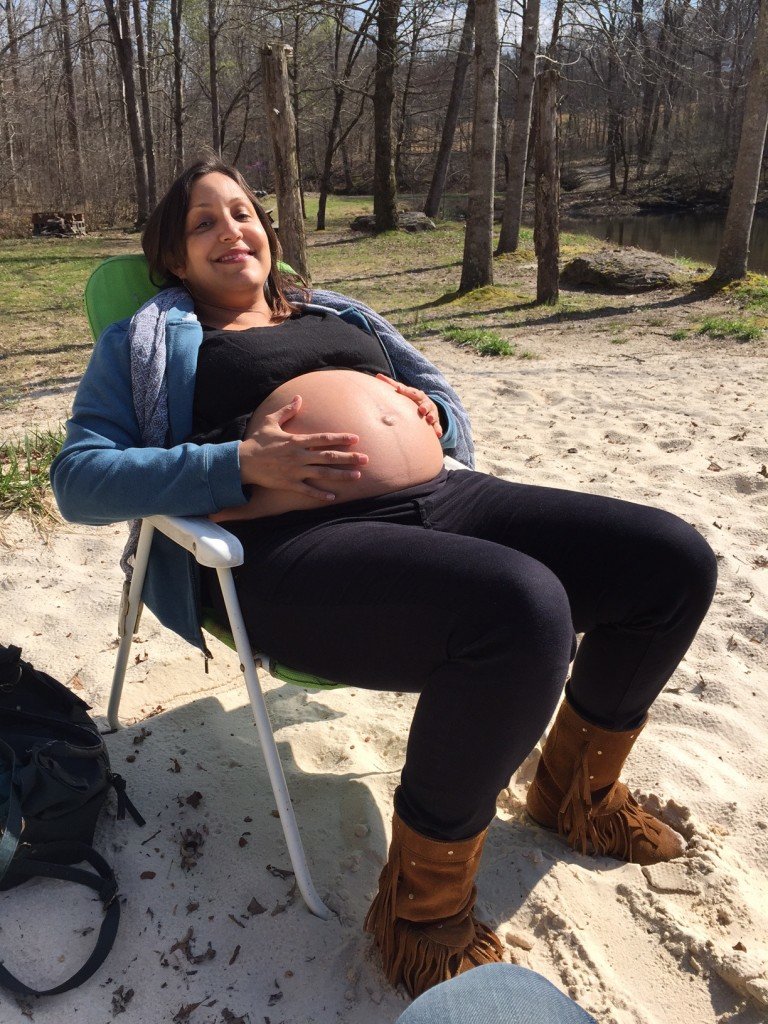
Instead of accepting their assessment of her placenta, Childs — who was determined to have a natural childbirth if she could do so safely — called her midwife at The Farm. Deborah Flowers consulted with two obstetricians and two ultrasound technicians to find out if the placenta calcification was a real risk. The obstetricians recommended non-stress tests to monitor the last weeks of the pregnancy, which Childs was happy to do. A non-stress test (NST) records the baby's movements, heart rate, and reactivity of the heart rate to movement (a healthy baby will respond with an accelerated heart rate when he or she moves, and the heart rate will decrease when resting). "We used to think that a Grade 3 placenta reflected pending placental insufficiency," one obstetrician wrote to Flowers, "but that has kind of fallen by the wayside. If the twice weekly NSTs and weekly amniotic fluid index (AFI) continue to look good, I would be reassured."
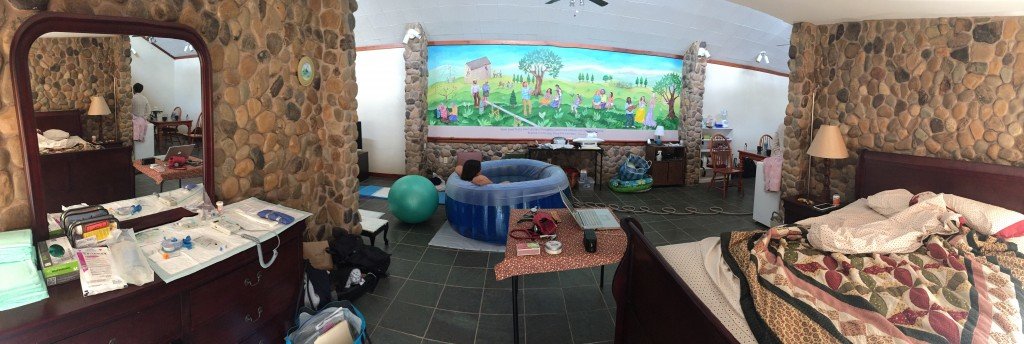
"It was even more transformative than I expected," Childs says, her eyes shining. "It's a rite of passage in a woman's life. You're going through this transition from the single you to the mother you. If you can be present for that whole transition and remember every single part of it — and feel like you're in control of your birth — it's a lot more meaningful than having someone else in charge of you."
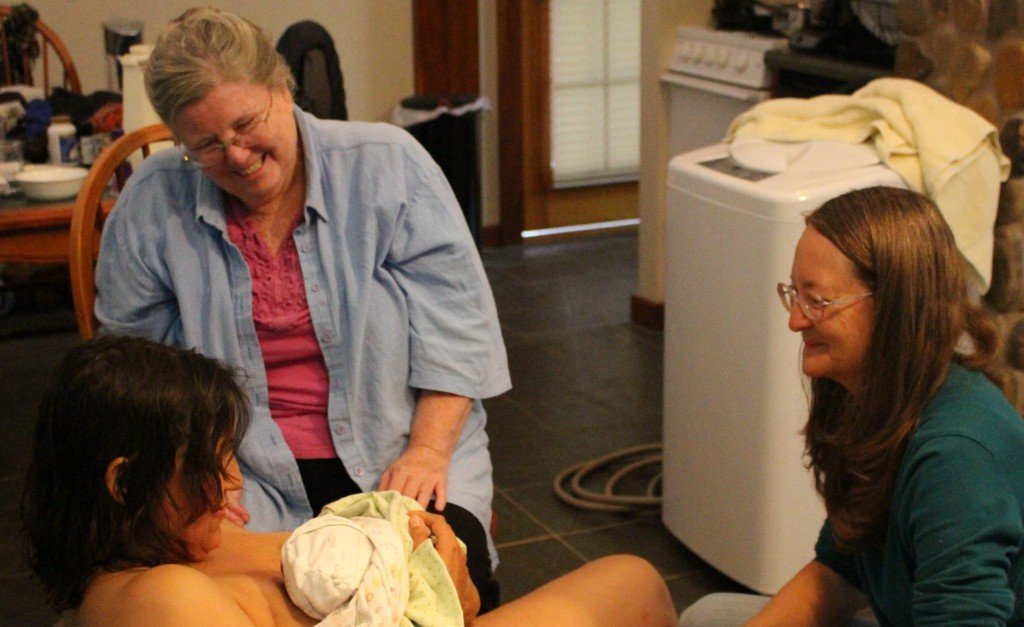
Unlike in the U.S., over 20 percent of all babies are born at home in the Netherlands. In that country, low-risk women covered by the country's universal health insurance, must actually pay extra fees if they want a hospital birth.
"Doctors and hospitals are saved for cases of medical need," explains Hermine Hayes-Klein, a Portland, Oregon-based lawyer and founder of the global non-profit Human Rights in Childbirth. She gave birth to both of her sons at home in The Netherlands in 2007 and 2010. Hayes-Klein says that the Dutch view home birth as normal and appropriate.
"Dutch culture is grounded in reason and cooperation, and Dutch people don't like to waste resources. Dutch women have a history of being relatively socially and economically empowered," Hayes-Klein explains via email. "The Dutch believe in the cultural value of 'gezelligheid,' a complex word that describes social coziness, loving togetherness, and which could actually be said to describe circumstances that facilitate the flow of oxytocin. The Dutch maternity care system situates normal childbirth in the place that is most 'gezellig,' — the home — a tradition that makes sense now that we understand the hormonal physiology of childbirth."
Indeed, over half a dozen large-scale peer-reviewed studies from countries around the world confirm that planned home birth is as safe or safer than hospital birth.
A 2014 study of the outcomes of over 16,900 planned home births in America, published in the Journal of Midwifery & Women's Health, concluded that healthy low-risk women who chose planned home birth attended by a midwife had very high rates of vaginal birth (94 percent), low rates of obstetric interventions (fewer than 5 percent required Pitocin or epidurals), and excellent outcomes for both moms and babies. However, babies born to higher-risk women in this study were found to have higher rates of fetal demise, though the absolute risk of a baby dying during childbirth was low.
Another study of over 146,750 birthing women in The Netherlands, found that the risk of severe complications was more than twice as high during hospital births than at home.
When experts in the U.K. did an exhaustive review of home birth safety, they concluded that midwife-assisted home birth was so safe and economical for low-risk women that the National Health Service has begun recommending it.
Hospital Practices Shown To Prolong Labor And Cause Harm
At the same time that large-scale studies are illustrating the safety of home birth, there is evidence to suggest that overtreatment, over-diagnosis, and medical error is causing harm in America.
A study released last week by researchers at Johns Hopkins University School of Medicine found that medical errors are the third leading cause of death in the United States.
Though this research did not specifically examine the maternity care system, birth-related medical intervention that can lead to maternal and fetal distress and demise include amniotic fluid embolism caused by the off-label use of misoprostol (Cytotec) to artificially induce labor; high doses of Pitocin (artificial oxytocin that is used to "augment" labor); as well as unnecessary C-sections and complications from surgical birth.
Jennifer Lang, M.D., points out that while tragic outcomes are relatively rare, much of what is routinely done to women in labor in American hospitals is not only unnecessary, it can also be harmful. These hospital practices she objects to include continuous fetal monitoring (which has been shown to increase C-sections without improving outcomes for babies), forbidding women from eating and drinking during labor (which causes dehydration, low blood sugar, and emotional stress), repeated vaginal exams (which are uncomfortable and can introduce hospital bacteria into the vaginal canal), and not allowing laboring women to change positions and move around freely (which has been shown to make birth more painful, more protracted, and more difficult.)
Lang says it's also customary for American hospitals to insist that women deliver flat on their backs in what doctors call the "lithotomy position," which makes vaginal delivery more difficult because gravity is working against them and the pelvis is more restricted than birthing standing up or on all fours.
"The more you look critically at hospital practices, the more nonsense you see," Lang insists.
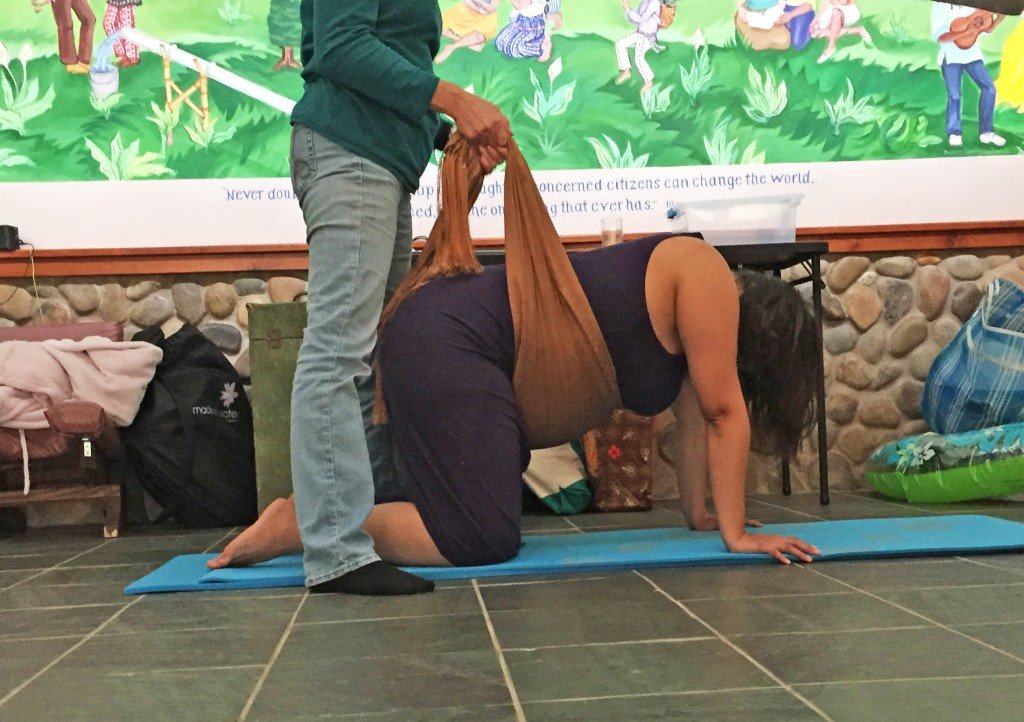
When Jessica Lotspeich, 34, was at the pushing stage three years ago at St. Tammany Parish Hospital in Covington, Louisiana, the doctor on call said he had a scheduled C-section to get to. "I have to cut you," he insisted, though Lotspeich was a second-time mom and had only pushed once. Since her older daughter was born with just a few pushes, Lotspeich protested.
"Too late," the doctor said, having already done an episiotomy (a surgical cut on the perineum, which is the tissue between the vaginal opening and the anus) without her consent.
The doctor was upfront about the fact that he did it for his convenience, because he was in a hurry. What he did not tell Lotspeich was that research has consistently shown that episiotomies cause more harm than spontaneous tearing. While the recovery from her first birth had taken just a few weeks, it took over two months for her episiotomy incision to heal. The birth left Lotspeich feeling violated, disempowered, and so depressed that she was put on suicide watch. "It was just so painful," she says. "I think he stitched me up wrong."
Coerced Epidurals
Jennifer Cross, 40, decided a vaginal, unmedicated birth would be the best way to deliver her son, who was born eight years ago.
"I'm not a pro-pain person," she says, explaining that she decided she didn't want an epidural, something every mom she knew took for granted, after talking to a "more granola" pregnant friend and doing a tremendous amount of reading. "This was huge for someone totally mainstream."
But from the moment Cross entered St. David's South Austin Medical Center, she felt pressured to change her plans. "The nurse said over and over, 'We can give you an epidural if you change your mind.' I kept saying, 'No, no, no,'" Cross tells me. "Then my doctor's partner came in and said, 'Oh, c'mon. Why don't you have her give you an epidural? It's going to be so much easier!"
After being badgered for hours, Cross finally relented, something she still feels badly about. Indeed, there are a lot of good reasons to avoid them. Women who have had epidurals remember feeling more pain than women who do not, epidural anesthesiainterferes with the naturally occurring hormones that help labor progress, and come with a host of other side effects, including a higher likelihood of surgical birth.
"I could have held out if I had had anyone encouraging me," Cross says. "My doctor really duped me. The second doctor told me later that my doc actually stopped her in the hallway and asked her to convince me to get an epi. I felt angry. I felt betrayed. At all my prenatal appointments she told me whatever I wanted was fine and she absolutely would do no epidural if I didn't want it."
These kinds of disappointments seem to be the norm rather than the exception, especially for women who want an evidence-based hospital birth. In the words of Alice Dreger, Ph.D., a historian of medicine and science who worked as a professor in Medical Humanities and Bioethics at Northwestern University's Feinberg School of Medicine for ten years, the most scientific birth is often the least technological.
If a woman wants an epidural, obstetrician Heidi Rinehart says, that's easy to get in the hospital. But if a woman wants a physiologic or natural hospital birth, that's harder to achieve.
"It's an unfamiliar environment in which the professionals are on their home turf," Rinehart explains. "You're playing an away game, not a home game. Any basketball team knows that at an away game you often play a little more poorly than on your home court."
So Where Is The Safest Place To Give Birth?
A mom named Aneka, who had three previous C-sections, was nine months pregnant when she decided not to have another abdominal surgery, despite her doctor's insistence that a repeat C-section was the only option. Aneka gave birth to a healthy 9-pound, 6-ounce baby at home after 20 hours of labor, attended by a midwife.
The American College of Obstetricians and Gynecologists, the trade association that represents the interests of American obstetricians and gynecologists, asserts that any prior C-section is a contraindication to home birth. Some data shows that moms who have had repeated C-sections have a higher risk for uterine rupture. But home birth advocates point out that the number of women who will experience uterine rupture is very low, and that the majority of women — 87 percent — who plan to give birth at home after having a C-section will experience a healthy, uncomplicated delivery. Did Aneka just get "lucky"? Or did she make the best, safest choice for herself and her family based on her level of comfort, risk, and her feelings about where and how she wanted to give birth?
For most women with a normal pregnancy, the safest place to give birth is where she feels safest, where she will be most relaxed, and where she will get the best care. For a growing number of women in America, that means giving birth at home.
About the author
Jennifer Margulis, Ph.D., is an award-winning journalist, the author/editor of 7 nonfiction books, and a Fulbright scholar. She has a B.A. from Cornell University, an M.A. from the University of California at Berkeley, and a Ph.D. from Emory. A frequent contributor to Jefferson Public Radio, she has published articles in The New York Times, The Washington Post, and on the cover of Smithsonian Magazine. Her work has been chosen for inclusion in Best American Science Writing, edited by Natalie Angier. She is the author of Your Baby, Your Way: Taking Charge of Your Pregnancy, Childbirth, and Parenting Decisions for a Happier, Healthier Family (Scribner) and co-author (with Dr. Paul Thomas, M.D.) of The Vaccine-Friendly Plan: Dr. Paul's Safe and Effective Approach to Immunity and Health—From Pregnancy Through Your Child's Teen Years (forthcoming from Ballantine). Visit her website. Follow her on Twitter. Find her on Facebook here and here.
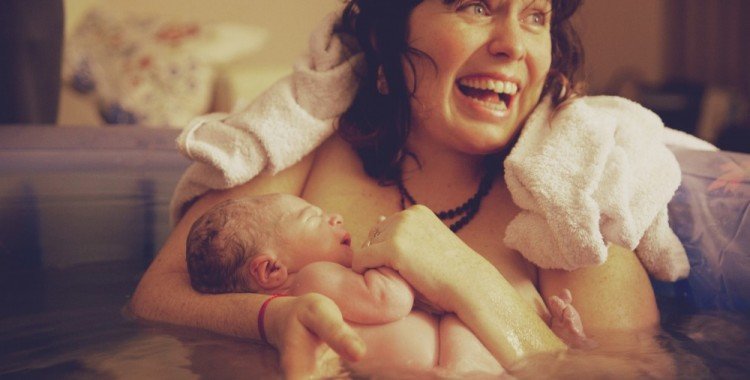



Reader Comments
to our Newsletter